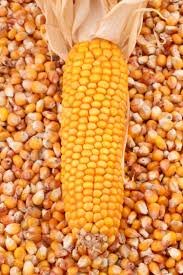The Ultimate Lawn Fertilizer Guide: What Your Grass Needs Right Now
It’s undeniable the health and vibrancy of your lawn care Fort Worth all year long highly depends on proper fertilization. So, homeowners who are looking to achieve that unique green, lush, and healthy yard should understand the pure essentials that come with lawn care.
Throughout this guide, you’ll see an overview of what your grass really needs at the moment. This information will make sure you have the proper knowledge to create a vibrant outdoor space that wows everyone who passes by!
Lawn Fertilization 101
First and foremost, lawn fertilization is essential if you want to maintain a healthy lawn and outdoor space.
This process involves applying the needed nutrients to the soil and contributes to grass growth over the year.
They include nitrogen N, potassium K, and phosphorus P—which are often referred to just as N-P-K.
Each of the nutrients above represents a crucial role in lawn care:
Phosphorus: This nutrient supports root development and flowering.
Potassium: This nutrient boosts overall plant health and drought resistance.
Nitrogen: This nutrient contributes to a more green, lush lawn growth.
Why Should You Fertilize Your Lawn?
Fertilizing your lawn can help replenish nutrients that could be depleted due to heavy traffic in your outdoor space or environmental factors, such as bad weather conditions and natural soil erosion.
To emphasize fertilization, regular maintenance of your lawn by fertilizing it leads to:
Improved color of your grass
Thickness
Much better drought tolerance
Higher disease resistance
When Should You Fertilize Your Lawn?
When is the perfect time to fertilize your lawn?
When it comes to lawn fertilization, timing is everything so here are a couple of points to consider:
Summer: When it’s summer, you should rely on light application for maintenance.
Fall: When colder weather comes, like fall, you should use a balanced fertilizer for root health.
Spring: During springtime, you should apply a nitrogen-rich fertilizer.
What about winter, though?
You don’t need to fertilize your lawn during the winter. If you follow practical lawn care tips throughout the year, it will stay healthy and vibrant.
How To Choose The Right Fertilizer?
The key is to choose the right fertilizer. This task can be an overwhelming experience for homeowners because there’s a wide variety to choose from.
If you’re having trouble choosing, here are a couple of favorites among homeowners:
Scotts Turf Builder: Synthetic, it’s fact-acting and ideal for lawns or overseeding.
CIL Iron Plus: Synthetic, it’s high in nitrogen for rapid growth, and it promotes a deep green color for your lawn.
Milorganite Slow-Release Nitrogen Lawn Fertilizer: Unlike the previous choices, this one is organic. Its formula is non-burning, and it feeds for up to 10 weeks. As a plus, it also contributes to a deeper green color for your lawn.
What Should You Consider When Purchasing a Fertilizer For Your Lawn?
Basically, there are 3 points you should consider when you’re purchasing fertilizer. They include:
Soil quality: You should conduct a soil test on your grass to determine its deficiencies.
Environmental conditions:Depending on where you live, you should consider the local climate patterns and weather patterns in your area before you make your final choice.
Grass type:It’s important to know that different types of grass have different nutrient needs.
4 Fertilizer Application Techniques
Regularly and adequately applied fertilization techniques ensure that the process minimizes waste and, more importantly, is effective.
They include:
Preparation
Firstly, this includes cleaning the debris from the lawn.
After the cleanup process, you mow the grass to an appropriate height, usually 2-3 inches. Generally, 3 inches is considered the ideal height.
Calculate The Needed Amount of Fertilizer
To calculate the right amount of fertilizer for your lawn, you should rely on the following formula:
Lawn Area sq ft x Recommended Rate lbs sq ft.
Spread The Fertilizer, Evenly
After you’ve calculated the right amount of fertilizer your lawn needs, you should use a broadcast spreader to distribute it evenly across the entire lawn.
The golden rule is to apply half of the fertilizer in one direction and the other half at the opposite angle.
Water Your Lawn
After the fertilization process, you should ALWAYS lightly water the lawn. This helps the fertilizer dissolve and carry nutrients into the soil.
3 Common Mistakes People Make When Fertilizing Their Lawn
The 3 most common mistakes that people make while fertilizing their lawns are:
Not following the schedule:
You need to fertilize your lawn regularly; that is the key. Avoiding a schedule will minimize the fertilizing effect.
Ignoring soil tests:
Another common mistake is not conducting a soil test before fertilizing your lawn. This mistake can lead to unnecessary nutrients being applied to your grass and missing the right ones.
Overdoing it:
Over-fertilizing your lawn can easily lead to burnt grass as well as environmental runoff.
Final Thoughts
In conclusion, a properly and regularly fertilized lawn can boost your curb appeal and positively contribute to the environment improving air quality and reducing erosion.
Now that you understand the main principles, factors, common mistakes, and peak times for fertilizing your lawn, you can enjoy vibrant, healthy, deep-green grass all year long.







